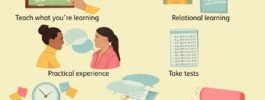Introduction
In today’s digital age, educational apps are increasingly being utilized to enhance children’s reading and writing skills. With the proliferation of smartphones and tablets, these apps offer a fun and interactive way for kids to engage with language and literacy concepts. By incorporating elements of gamification and personalized learning, educational apps have the potential to make the process of learning to read and write more engaging and effective for young learners.
The Benefits of Educational Apps for Reading and Writing
One of the key advantages of using educational apps to improve reading and writing skills is the interactive nature of the content. Unlike traditional methods of learning, such as textbooks and worksheets, apps can provide immediate feedback and adaptive learning experiences tailored to each child’s individual needs. This personalized approach can help children stay motivated and engaged, leading to better retention of information and improved skills over time.
Educational apps also have the advantage of being highly accessible and convenient. With a wide range of apps available on various platforms, parents and educators can easily find resources that suit their children’s learning styles and preferences. Whether it’s practicing phonics, building vocabulary, or honing grammar skills, there are apps designed to target specific areas of reading and writing development.
Moreover, educational apps can make learning feel like play, blurring the lines between education and entertainment. By incorporating elements of gamification, such as rewards, badges, and levels, apps can create a sense of achievement and progress that motivates children to continue learning. This gamified approach can help alleviate the pressure often associated with traditional learning methods, making the process more enjoyable and engaging for kids.
Features of Effective Educational Apps
When choosing educational apps to improve reading and writing skills for kids, it’s essential to look for certain features that enhance learning outcomes. Firstly, the app should offer a diverse range of activities that cater to different learning styles and abilities. This could include interactive games, reading exercises, writing prompts, and audiovisual materials that engage children on multiple levels.
Additionally, effective educational apps should provide opportunities for practice and repetition to reinforce learning. By offering a variety of exercises that gradually increase in complexity, apps can help children build foundational skills and progress at their own pace. Furthermore, incorporating adaptive learning algorithms that adjust difficulty levels based on a child’s performance can ensure a personalized and targeted learning experience.
Another important feature to consider is the app’s alignment with educational standards and curriculum requirements. By selecting apps that support the skills and concepts taught in school, parents and educators can supplement classroom learning and provide additional practice outside of the traditional setting. This alignment can help reinforce lessons learned in school and bridge any gaps in understanding that children may have.
Best Practices for Using Educational Apps
To maximize the benefits of educational apps for improving reading and writing skills, it’s important to establish a balanced approach to screen time and usage. While apps can be valuable tools for learning, they should supplement, not replace, other forms of literacy development, such as reading physical books and engaging in writing activities offline. Setting limits on screen time and encouraging a healthy balance between digital and non-digital activities is crucial for children’s overall development.
Furthermore, parents and educators should be actively involved in their children’s use of educational apps. By monitoring progress, providing guidance, and offering support when needed, adults can help children navigate the app’s features and make the most of their learning experience. Regular communication with teachers can also help ensure that the app aligns with the child’s educational goals and complements classroom instruction.
Encouraging children to set goals and track their progress can also enhance the effectiveness of educational apps. By setting achievable milestones and celebrating achievements, kids can stay motivated and engaged in their learning journey. Creating a positive and supportive learning environment that fosters curiosity and a love for reading and writing is essential for long-term success.







